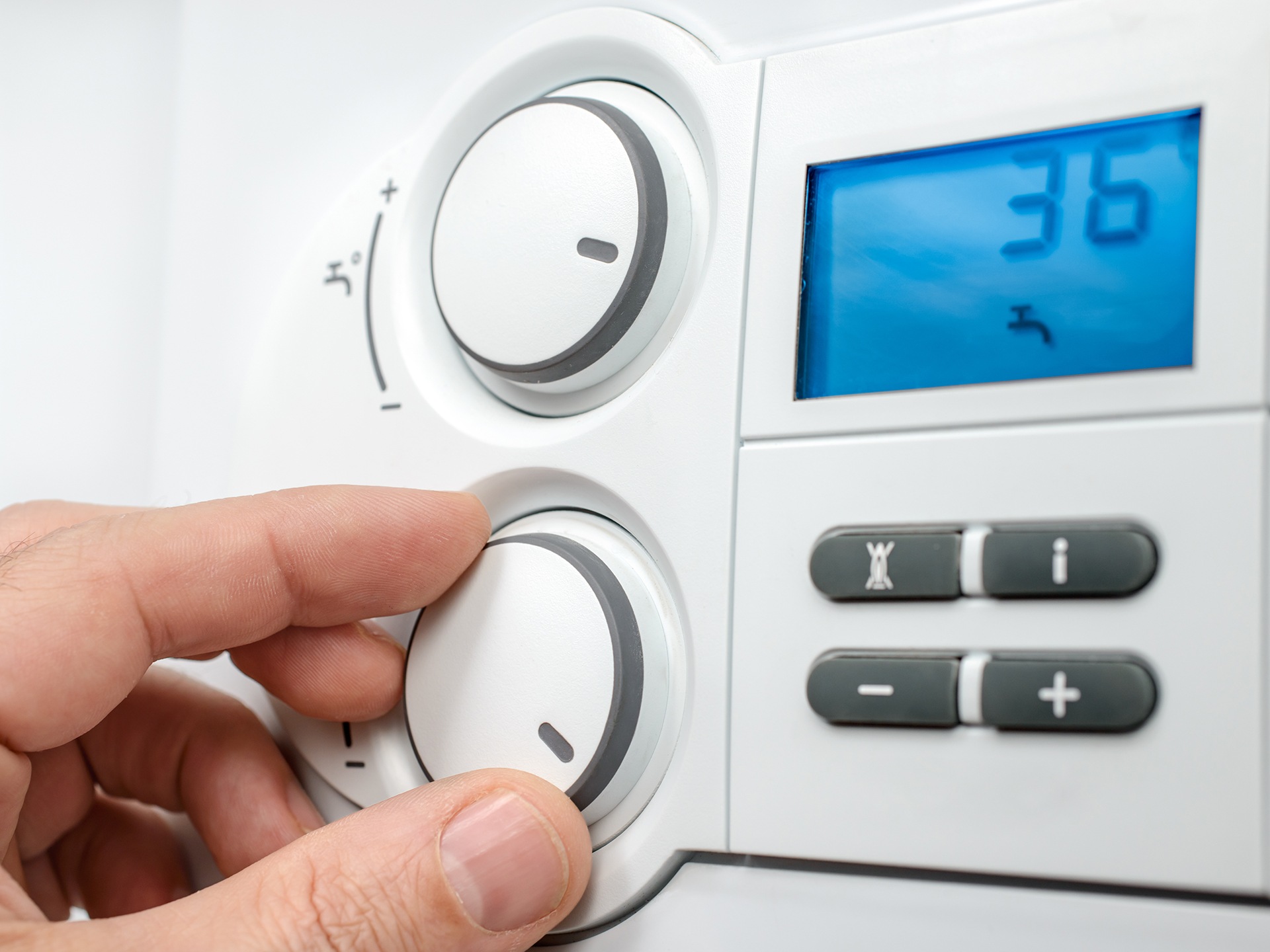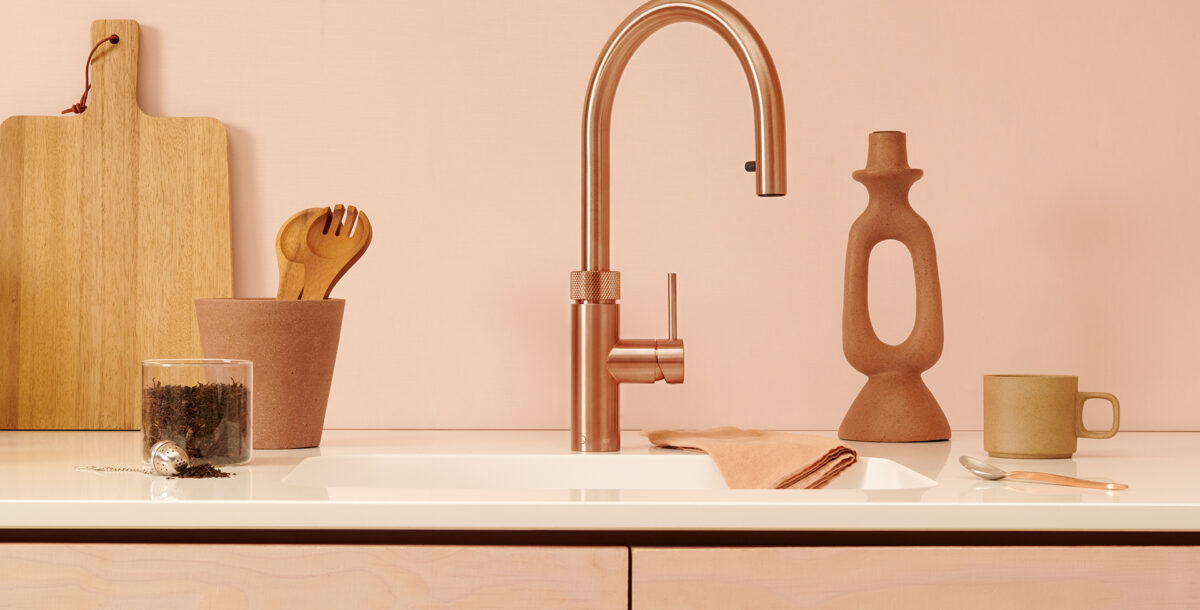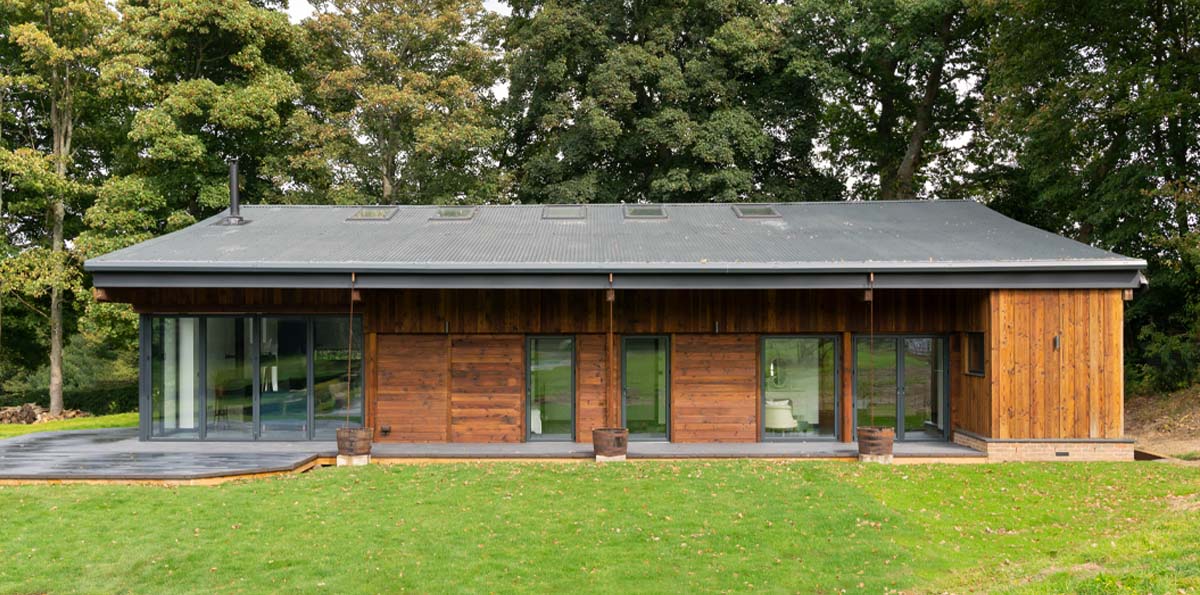Electric heater vs gas central heating – which is cheaper for a single room?
We find out whether you should invest in an electric heater or just turn the main heating on if you just need to heat the one room.
With more of us working from home, contained within a single room, we all face higher costs. One big cost is that of heating our homes, with most of us having a form of central heating that warms the entire home. With plenty of low-cost electric heaters available, the question many of us have is, is it cheaper to run an electric heater or turn the central heating on for a single room only?
As you might expect, the answer is quite nuanced and depends on the type of home you have, your heating system, and the type of electric heater you buy. Before we get into the details, let’s review the basic information.
Central heating running cost
First, we’ll look at the cost of gas central heating. The cost to run a boiler depends on its size, rated in kW. Larger homes need larger boilers and cost more to run. Typically, combi boilers range between 20kW and 40kW, with most homes somewhere in the middle. System boilers tend to be smaller, as they don’t need the high heat output to near-on-instantly heat water.
Currently, gas is charged at 6.04p per kWh on the price cap, which runs until the end of June 2024. Boiler manufacturers often quote the running cost of a boiler per hour, as its rated output multiplied by the unit cost. For example, a 20kW boiler is quoted as having an hourly running cost of £1.21. This is actually the maximum cost per hour, and boilers don’t run at maximum output for the entire time, which makes this kind of figure not very useful. We’ll come to running costs later.
If you’re running a heat pump, then most homes have a pump rated at between 5kW and 16kW, depending on the size of their home and how well insulated it is. Because heat pumps are so efficient, they have smaller power requirements than an equivalent gas boiler.
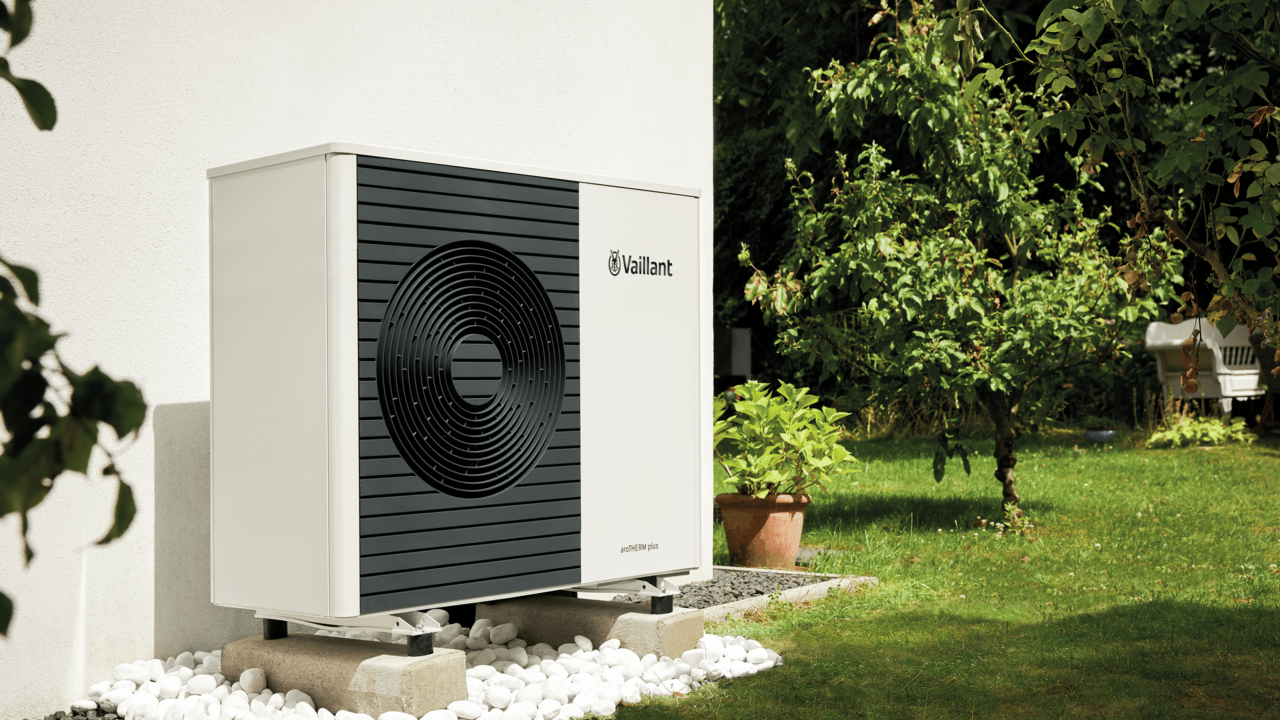
Image credit: Vaillant
Heat pumps are highly efficient, and the heat output is greater than the electricity input as these devices move heat from one source to another. Known as the Coefficient of Performance (COP), this is the ratio between the input power and output power. As this can vary, based on the weather, an average, known as the Seasonal Performance Factor (SPF) is used. For an air-source heat pump in the UK, the average SPF is 2.8, according to government figures. So, for each 1kW of input power, 2.8kW of output is generated. So, a 10kW heat pump would actually use a maximum of 3.57kW.
Again, a heat pump is specified for the maximum heat output required, and it will often run at far lower outputs. Instead, it’s important to look at the overall heat requirement, as explained below.
We haven’t gone into the costs of alternatives, although our guide to biomass boilers has more information if you have or are thinking about getting one.
Electric heater running costs
Electric heaters are available in different types. Convection heaters have a heating element that warms the air, and as the air heats and circulates, it slowly warms the entire room. Then, there are fan heaters, which use a fan to push air out into the room, circulating heat faster. With these, once the heater is off, the room starts to cool immediately.
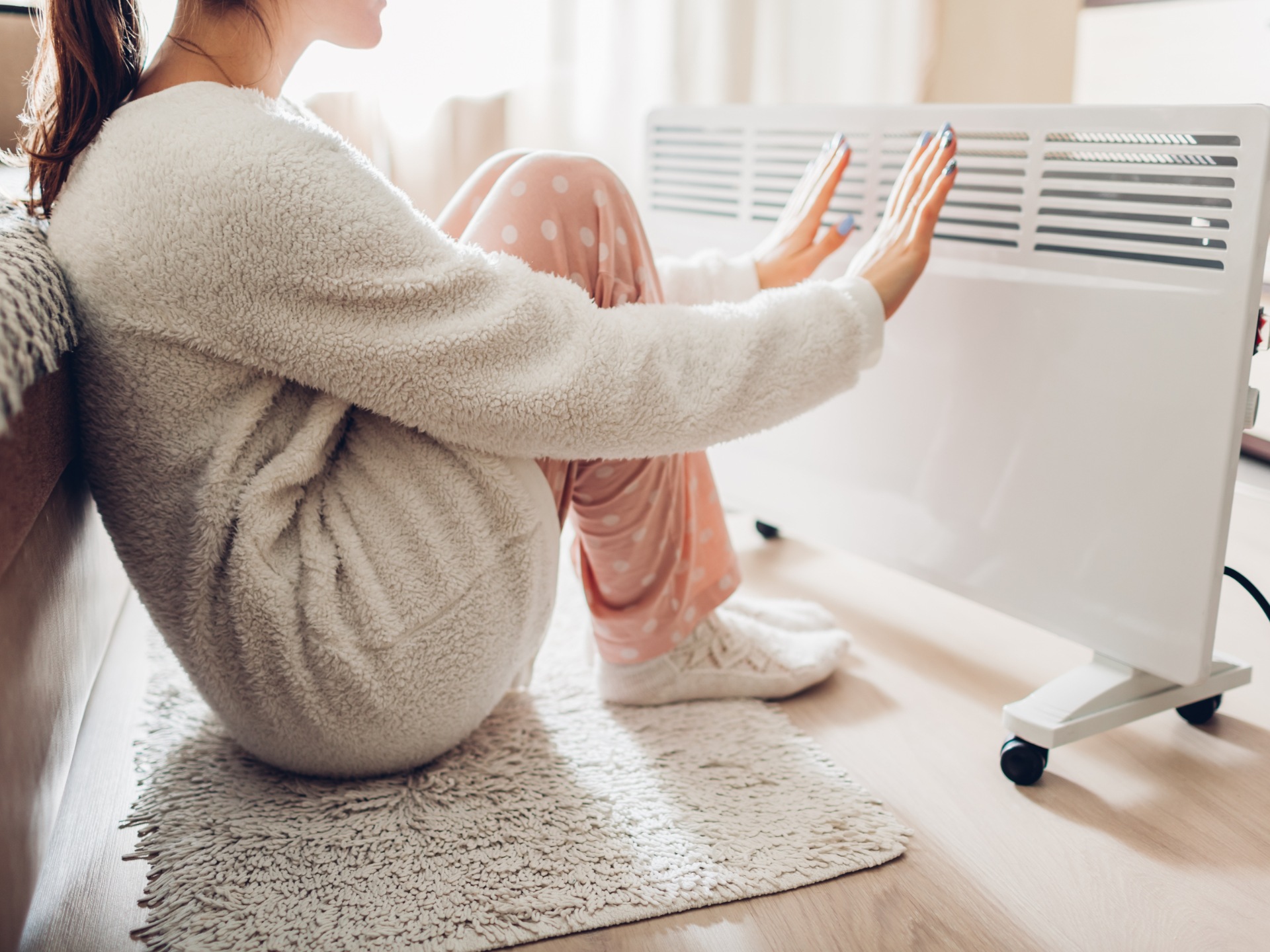
Oil-filled radiators heat oil, which means they’re slow to warm up but cool down more slowly, so the temperature drop is more gradual. This can mean that oil-filled radiators work out to be cheaper to run, as the heat loss is slower and there’s less reason to turn them back on to boost temperature. With a convection heater or fan heater, there’s more temptation to turn them back on to get a hit of warmth.
Finally, there are infrared heaters, which don’t heat the air but warm objects (including you) directly. As a result, these use about 40% less power, but the heat feels different, so you will feel warmer although the air temperature is lower: think about how it feels to stand under the bright sun on a crisp winter’s day, for example.
Electric heating is pretty much 100% efficient in all cases, as the electricity used is converted straight to heat. A typical electric heater will use 2kW of energy, which will cost around 49p per hour to run based on the . An equivalent infrared heater will be around 1kW, so it will cost 30.12p per hour to run.
The full detail
There’s a temptation to quote hourly running costs for heating systems, taking the maximum output. But this is misleading. For central heating, the hourly cost is not constant, and heating systems aren’t on maximum output for the duration that your heating is turned on.
With heat pumps and boilers, the systems monitor the flow temperature of the water and won’t heat past the set temperature, modulating the output. This means that they’re often running at a fraction of the full power for long periods. Secondly, a thermostat will shut down the system when the temperature is reached. That means that in any given period, the boiler or heat pump will not be heating constantly and not at full output.
Overall, a home’s total heat requirement is more important, and our guide on how much a heat pump costs to run uses that information to give a better comparison between heat pumps and gas boilers.
For clarity, we’ll explain some of the same things here. Total heat output required takes into account how boilers and heat pumps work, and includes any nuance and detail. For example, boiler modulation means that a boiler will not run at full capacity but will use a fraction of the power it’s capable of to heat your radiators to meet the current demand (effectively, this means a boiler or heat pump is not running at maximum power, reducing the hourly running figure). And condensing boilers recapture heat that would be wasted to improve efficiency and lower gas consumption.
Even taking this into account, hourly running figures aren’t typically very useful: a heat pump might be cheaper to run per hour than a gas boiler, but will heat ‘low and slow’, running for longer periods and, again, not typically at the full output figure. That’s why it’s important to look at real-world usage and the total heating requirement for a home.
Looking at the figures, a typical UK home uses 11,500kWh of gas (assuming a three-bedroom home with 2.4 people in it), which costs £694.60 a year for hot water and heating. Based on average boiler efficiencies (boilers are, according to government figures, 80% efficient on average), this is actually 9,200kWh of heat output. With an air-source heat pump, on average, this means 2,968kWh of electricity is required, which costs a similar £805 per year.
These figures do include hot water, which the Energy Saving Trust says is around 12% of a typical householder’s bill. If we remove the cost of hot water, then a gas boiler, on average, costs £611.25 to heat a house per year, and an air source heat pump would cost £639.85 a year to run.
As an electric heater doesn’t heat water, there’s a whole-home heat demand of 8096kWh per year. Taking that average heat output for a three-bedroom home, a 2kW electric heater for one room, would require roughly 1/6th of power (given six rooms: three bedrooms, one bathroom, a kitchen and living/dining space). So, that’s roughly 1349kWh of power required, or £330.59 a year.
Of course, you wouldn’t use an electric radiator all of the time, and would have it turned off while the main heating is on. However, our figures give a comparison and to just warm a single room, while the central heating is off, a single electric heater should be cheaper. However, as you can see from the figures, based on heat demand required, running a couple of electric heaters in a home is expensive, and using central heating soon becomes the most efficient and cheapest source of heating.
Electric heaters also vary depending on the model. The cheapest ones are just on or off and will keep heating while turned on, which will soon add to the cost; models with a thermostat will shut off when the room hits the target temperature, and the heater won’t turn on again until the temperature has dropped. For that reason, a heater with a thermostat is a better choice, even if it costs a little more to buy.
Cutting costs
We’ve given a basic picture, but keeping running costs down at home can be complicated. For central heating, smart heating controls can help save money, particularly if you install smart thermostatic radiator valves (TRVs), which give you individual control of each radiator, lowering the total heat demand at any given point. At this point, as you’re only paying to heat one room at a time, it’ll likely be cheaper to run a single radiator than turn to an electric heater.
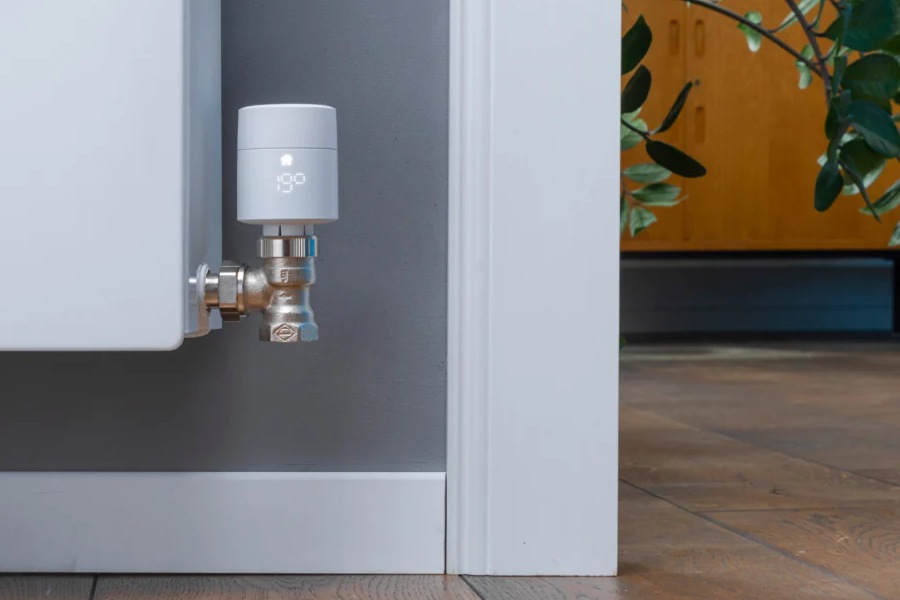
Image credit: Tado
While electric heating is generally more expensive for an entire home, infrared heating can be good value, as the panels uses less energy than traditional electric heaters, and you get individual room control: you only need to turn on heaters when a room needs to be used.
Our guide on saving money on heating bills provides more information on how to cut home running costs, regardless of the heating system that you use.
Conclusion: which is cheaper, an electric heater or central heating?
Overall, an electric heater with a thermostat is often cheaper to use in one room than to heat the entire house with central heating. However, when you do need to heat the entire home, central heating is the better option.
And, for heat pump owners, you should take advice from your heating engineer, as the most experienced installers are finding that fine-tuning the system for your home, taking into account the specific heat loss of your home. With some of the most efficient heat pump installations, such as this home in Yorkshire, the heating is controlled via weather compensation alone, with all radiators fully open, delivering lower running costs than a gas boiler could achieve. With this system, the entire home maintains a comfortable temperature all day, negating the need for an electric radiator.

